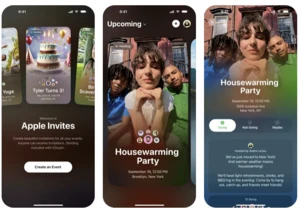Choosing the best smartphone for your needs can be challenging. With so many brands offering similar features at similar prices, it can be hard to understand what device actually has the things you want. If you’ve already determined you only want an iPhone, your decision-making process is slightly easier. (And even then, Apple’s lineup offers more options than ever.) Those also considering Android will have even more options to choose from, and likely more questions. Do you want a camera that can zoom into subjects that are extremely far away, or do you want intuitive AI that can screen your incoming calls for you? Here at Engadget, we test smartphones all year round and can help you make sense of what’s available and what to look out for. And, of course, we’ve included our top picks to help you whittle down your shortlist.
Android or iOS?
When you're searching for the best smartphone, it becomes clear that each OS has its pros and cons. Apple’s tight-knit ecosystem makes it super easy to share data between iPhones, iPads and Macs or seamlessly hand-off phone calls or music from one device to another. At the same time, you’re effectively locked in, as services like Apple Messages aren’t available on other platforms.
As for Android, there’s a much wider range of handsets from companies like Google, Samsung, Sony and more. However, Android phones don’t enjoy that same length of software support and often have lower trade-in values. In short, there’s no wrong answer. However, you will want to consider how your phone will fit in with the rest of your devices. So unless you’re really fed up with one OS and willing to learn another, it probably doesn’t make a lot of sense to switch from an iPhone to an Android phone (or vice versa) – especially if everyone else in your household is using the same platform.
Cameras
Since your cell phone often pulls double duty as your primary camera, figuring out what kind of photo tools you want is key. Nowadays, practically every mobile phone can take a great picture in bright light. But if you want a long optical zoom, you’ll probably have to upgrade to a more expensive device.
Mid-range phones often only have two rear cameras (a primary wide-angle lens and a secondary ultra-wide camera) and can sometimes struggle in low-light situations. Each phone maker also has various features that might be a better fit for your style, with Apple offering four different color presets on the latest iPhones, while Google’s Pixel 7 comes with neat tools like dedicated long exposure and action pan modes.
Will you get 5G or Wi-Fi 6?
The good news is that in 2022, most phones have at least 802.11ac Wi-Fi and support for one or more types of 5G connectivity. However, if you want the fastest wireless speeds you can get, it’s going to cost you a bit more. For example, on certain networks, mmWave 5G offers up to gigabit download speeds, less latency and better bandwidth. But mmWave 5G also requires more sophisticated (and pricier) modems, which means support for it is often missing from budget and mid-range handsets like the iPhone SE.
On the bright side, mmWave 5G isn’t as widely available as other versions of 5G, so depending on where you live and what network you’re on, you may not be missing out on much if you buy a phone that doesn’t support it. It’s a similar situation for Wi-Fi 6 and Wi-Fi 6e, which are available on a number of high-end devices, but harder to find on less expensive handsets. Wi-Fi 6 also requires you have to have a compatible router, so unless you know you need it or have a specific use case in mind, the lack of support for mmWave 5G or Wi-Fi 6E shouldn’t be a dealbreaker when looking for a new phone.
Other features to consider
Because not everyone agrees on what makes the best phone, you should think about any other specs that might be extra important for you. Mobile gamers will almost certainly appreciate the 120Hz refresh rates you get on phones like the Samsung Galaxy S23 or the Apple iPhone 15 Pro. Alternatively, if long battery life is important, you’ll probably want to go with a larger iPhone or an Android phone with a battery that’s between 4,000 and 5,000 mAh in size. Meanwhile, if you find yourself juggling a lot of devices, it can be really nice to have a phone that supports reverse wireless charging, which on Samsung phones even lets you recharge the company’s Galaxy Watches.
Best iOS smartphone: iPhone 15 Pro
The changes to the iPhone 15 Pro and Pro Max may seem small when considered on their own, but together they add up to more than the sum of their parts. For the iPhone 15 Pro Max, in particular, the smaller, lighter titanium build means it might be within the realm of consideration for many shoppers for the first time. It’s no longer sharp and hefty like a weapon, but still has one of the longest-lasting batteries on the market.
The larger handset also gets a new 5x telephoto camera that helps it catch up to flagships on the Android side, which have had zoom lenses for years. Though Apple doesn’t outclass the competition on photography, it’s certainly closed the gap and you’ll find great cameras on both the Pro and Pro Max. They also have updated portrait effects and editing tools, so photography is improved whether you’re shooting faraway subjects or something just in front of you.
Both iPhone 15 Pro models have the new Action Button and USB-C charging, the latter of which will be more meaningful in a couple of years when the world presumably ditches Lightning at last. The Action Button, meanwhile, takes the often unused mute slider and gives you the option of mapping a frequently used shortcut to it, so you can quickly launch the camera, flashlight, voice recorder or magnifier. Having this many ways to configure the Action Button means it’s far more useful to more people than a simple toggle for silencing your phone.
This year’s A17 Pro chip not only brings excellent performance, but its six-core GPU also enables console-level gaming and hardware-accelerated ray tracing for realistic lighting effects. Later this year, you can dig into titles like Resident Evil Village and, in early 2024, Assassin’s Creed Mirage on the iPhone 15 Pro and Pro Max. You’ll also get a second-generation ultra wideband chip for improved precision object location, and reverse USB charging so you can power up your accessories in a pinch.
When you consider all these features as a whole, the iPhone 15 Pro and Pro Max are not just a solid upgrade from their predecessors, they’re also among the best phones around. – Cherlynn Low, Deputy Editor
Read our full review of the iPhone 15 Pro Max
Best Android smartphone: Samsung Galaxy S23 Ultra
The Galaxy S23 Ultra has pretty much everything you could want or need on a super premium flagship phone. It features a gorgeous 6.8-inch AMOLED display with a 120Hz refresh rate, a speedy Snapdragon 8 Gen 2 chip, longer battery life and a built-in S Pen for all your drawing and notetaking needs. New for 2023 is a huge 200MP sensor for the phone's main camera, which comes with improved OIS, 8K/30fps video recording and some additional photography tools in the Expert RAW app.
The main downsides are that starting at $1,200, the S23 Ultra is as expensive as ever, and while its advanced photo and video features have a lot of potential, you need to put in some extra time and effort to get the most out of them. And because the phone's design, display and most of its cameras are so similar to previous models, anyone who bought an S22 last year can safely skip upgrading this time around. But for people who want a true do-everything handset, the S23 Ultra is in a class of its own and is our pick for the best Android phone. – Sam Rutherford, Senior Reporter
Best midrange Android smartphone: Google Pixel 7a
The $500 Pixel 7a delivers everything we look for in a great affordable phone. New features include a faster Tensor G2 chip, a smoother 90Hz display and for the first time on one of Google’s A-series phones: support for wireless charging. And with a refreshed design with IP67 water resistance, it looks and feels like the standard Pixel 7 but for $100 less. You also get great support thanks to five years of security updates and at least three OS upgrades. The phone’s only shortcomings are rather small and include a lack of a dedicated zoom lens and no support for mmWave 5G (unless you purchase a slightly more expensive $550 model from Verizon). – S.R.
Best midrange iPhone: iPhone SE (2022)
With an A15 Bionic chip and iOS 15, the latest Apple iPhone SE is possibly the most powerful phone you can find for under $450. Sure, it has a dated design, but some folks might actually appreciate the retro look. The best thing about the iPhone SE is its home button: It’s the only new iPhone to have Touch ID. And though it only has a single rear camera, the SE still takes solid pictures. If you can get over the small, low-res screen, the iPhone SE will serve you well. It’s also really the only sub-$500 option for iOS diehards.
If you’re open to considering Android and want to spend less than $400, consider something from Samsung’s Galaxy A-series or the OnePlus Nord N20. Those looking to spend even less can check out the Moto G Power – just be prepared to compromise on features like display and cameras at these lower price points. – C.L.
Best camera on a smartphone: Pixel 7 Pro
It’s hard for me to leave the house without the Pixel 7 Pro, my pick for best camera phone. As long as there’s a chance I might want to take photos, I make sure I’ve brought Google’s latest flagship. The Pixel 7 Pro’s triple rear camera system is versatile enough to capture anything from the largest group shots or wide landscapes to faraway animals (like that time I thought I spotted a whale when staring at a distant blob from Acadia National Park). Google’s Night Sight still outperforms the competition when taking pictures in low lighting conditions, too, and its computational photography delivers clear, vivid photos.
Of course, Samsung and Apple’s flagships are closing the gap, and these days there is little difference between the photos they deliver. Some people might even prefer the warmer tint on Galaxy devices. But special features like Google’s Magic Eraser and Motion effects make the Pixel 7 Pro the most fun to shoot with. Plus, I love the additional tools you get on Pixel phones, like Call Screening, Material You theming and Live Captions, among others. – C.L.
Best foldable for multitasking: Samsung Galaxy Z Fold 5
While Samsung didn’t make a ton of changes to the Z Fold 5, it’s still the best big flexible phone on the market. As before, you get native stylus support, IPX8 water resistance (good for dunks of up to five feet for 30 minutes) and of course, a stunning 7.6-inch main display. New for 2023 is a faster Snapdragon 8 Gen 2 chip, improved brightness, expanded multitasking capabilities and most importantly, a completely redesigned hinge. Not only does Samsung’s new Flex hinge eliminate the gap between the two sides of the phone when it's closed (to help keep dust out), it also makes the phone thinner (down to 13.4mm from 15.8mm), which is a nice change for what was already a somewhat bulky device. The biggest issue remains its price: Samsung’s latest flagship foldable remains exorbitantly
Login to add comment
Other posts in this group
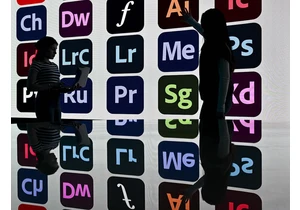
Adobe has updated the Acrobat AI Assistant, giving it the ability to un
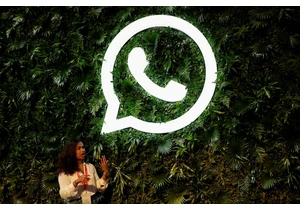
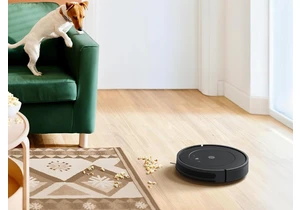
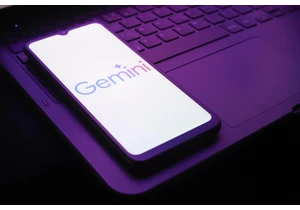
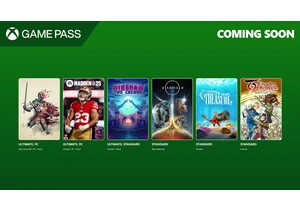
Xbox just announced the new titles that will be available for Game Pass this month, an

Proving that truly no IP is safe from modern reboot
